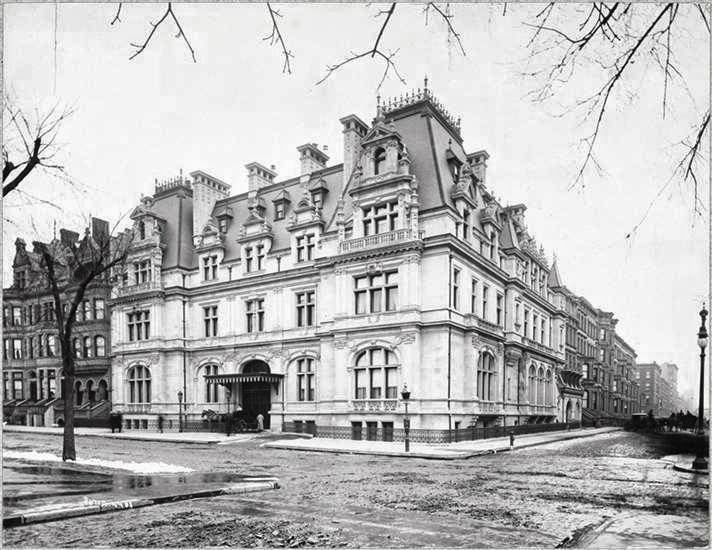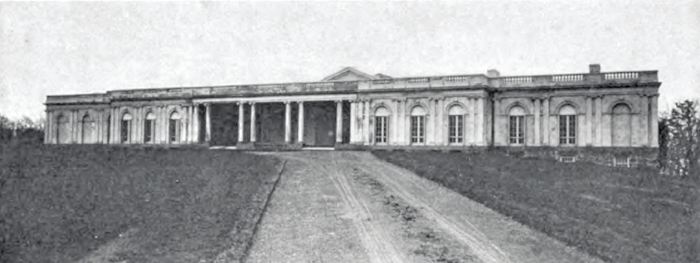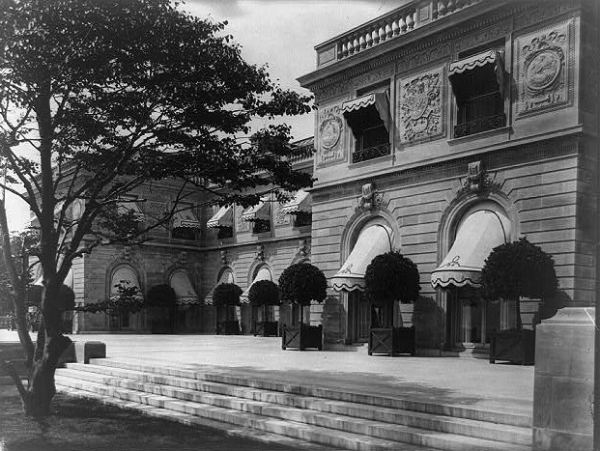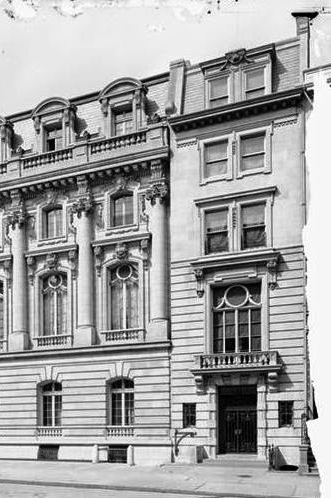Some First Class Residences of the First Class Passengers on the Titanic
Like any group of unrelated travelers, the First Class passengers onboard the Titanic’s maiden voyage were a varied lot; multi-millionaires, businessmen traveling on their company’s dime, splurging honeymooners and upper-middle-class families. For some, the experience was akin to traveling on a floating palace. For others, it paled next to their usual surroundings. One of the best indicators of how they might have viewed their surroundings at seas is to look at their various homes back on land. In this post I will look at some of the homes owned by some of the more bold-faced names associated with the famous, doomed voyage.
John Jacob and Madeline Astor
By far the richest man on the ship, John Jacob Astor lived on a palatial scale far beyond most of his fellow First Class Travelers. His principal residence was a massive French chateau designed by Richard Morris Hunt at 840 Fifth Avenue. Originally constructed as two adjoining mansions for him and his mother, the legendary Caroline Astor, he had the two homes combined into a single mega-mansion following her death in 1908.
Astor also inherited Beechwood, his mother’s Bellevue Avenue Estate in Newport, Rhode Island, though he preferred to spend his weekends and summers at Ferncliff, the two thousand acre estate in Rhinebeck that his father had amassed.
The Casino at Ferncliff
In addition to its large Italianate mansion, he had Stanford White design a casino loosely inspired by le Grand Trianon for him which contained an indoor tennis court, swimming pool, and guest quarters for bachelor guests
The Wideners
Nipping close at the heels of the Astors on the boat in terms of both wealth and grand homes would the Wideners of Philadelphia.
Lynnewood Hall
George Dunton Widener, his wife Eleanor Elkins Widener and their son Harry resided at Lynnewood Hall, a 110-room Neoclassical mansion Designed BY Horae turmbauer for George’s father Peter A Widener in 1897 .
Miramar, complete by Eleanor Elkins Widener after her husband's death
At the time of the sailing, plans for another Trumbauer-designed mansion for the family in Newport, Rhode Island were underway. While George and his son perished in the disaster, his widow Eleanor carried on with the project, which was completed in 1914. Called Miramar, it was one of last palatially-scaled cottages built at the resort, and continues as a private residence today.
Isidor and Ida Strauss
Isidor Straus was a co-owner of Macy’s Department Store. The Strauses live on in popular culture for Ida’s refusal to leave her husband of forty years, saying "I will not be separated from my husband. As we have lived, so will we die, together." In 1884, the couple had purchased a home on 105thstreet between Broadway and West End Avenue, believing the relatively open spaces of the Upper West Side would provide a healthy environment to raise their children. Their home was enlarged several times, over the years until it encompassed nearly the entire block front. After their deaths, it was razed and replaced by a 16 story apartment building.
The Strauses also owned a large Colonial revival summer cottage in Elberon New Jersey, a favored resort of New York’s tight-knit, upper-class Jewish community.
Benjamin Guggenheim
Benjamin Guggenheim is best remembered for returning to his stateroom accompanied by his valet after seeing his mistress and her maid off in a lifeboat, reemerging on deck a short time later in full evening dress, saying "We've dressed up in our best and are prepared to go down like gentlemen."
15 East 72nd st (at right)
While he owned a townhouse at 15 East 72ndst (still standing), he was often away on business and his wife Florette preferred not having the responsibility of a house to run on her own. At the time of the sinking it was rented out to Guggenheim’s sister, while she and their three daughters occupied a suite of rooms at the St Regis Hotel.
Margaret Brown
For all her bombast and larger than life persona, “the Unsinkable Molly Brown’s" home in Denver seems a relatively low-key affair in comparison. This might have been due to her never really becoming a member of Denver society’s inner circle. Instead, she spent a good deal of time on the East Coast, where her outspokenness and active intellectualism were more appreciated.
Col. Archibald Gracie
Writer, soldier, amateur historian, real estate investor, Archibald Gracie was believed to have been the last survivor to leave the ship (he was washed overboard as it began its final plunge, and managed to reach an overturned collapsible lifeboat.
While descended from an old New York family (his great-grandfather was the builder of Gracie Mansion), he and his family lived in Washington during the social season, occupying this house at 1527 Sixteenth st NW. Gracie was also believed to be the first survivor of the sinking to die, later that year in December of 1912. According to the papers, he was living at the Hotel St Louis at the time of death.
Helen Churchill Candee
Helen Churchill Candee was an American author, journalist, feminist and one of the country’s first female interior decorators. Born in New York, by the early 1900’s Helen was living in Washington DC, in this handsome brick townhouse (still standing).
She also maintained a summer cottage in York Harbor Maine, where she passed away in 1949.
The Countess of Rothes
The attractive and popular Lucy Noel Martha Leslie grew up in privileged surroundings. Her parents, Thomas and Clementina Dyer – Edwards (who accompanied her on the Southhampton from Cherbourg portion of the voyage), owned a townhouse in Kensington, a chateau in Normandy and a country house called Prinknash Park in Gloucestershire.
Prinknash Park today, now an abbey
The Dyer-Edwards chateau in Normandy
After her marriage to Norman Leslie, the 19th Earl of Rothes in 1900, she split her time between a townhouse in Chelsea and Leslie House, his family seat in Scotland.
Sir Cosmo and Lady Duff Gordon
Cosmo Duff Gordon, a prominent Scottish landowner, sportsman and Baronet, married the celebrated fashion designer Madame Lucille in 1900.
The couple lived at 5 Alfred Place, Kensington, when not at his ancestral country estate Maryculter in Kincardineshire, near Aberdeen
MaryCutler House
In my Next Installment, the Best of the Rest....


































